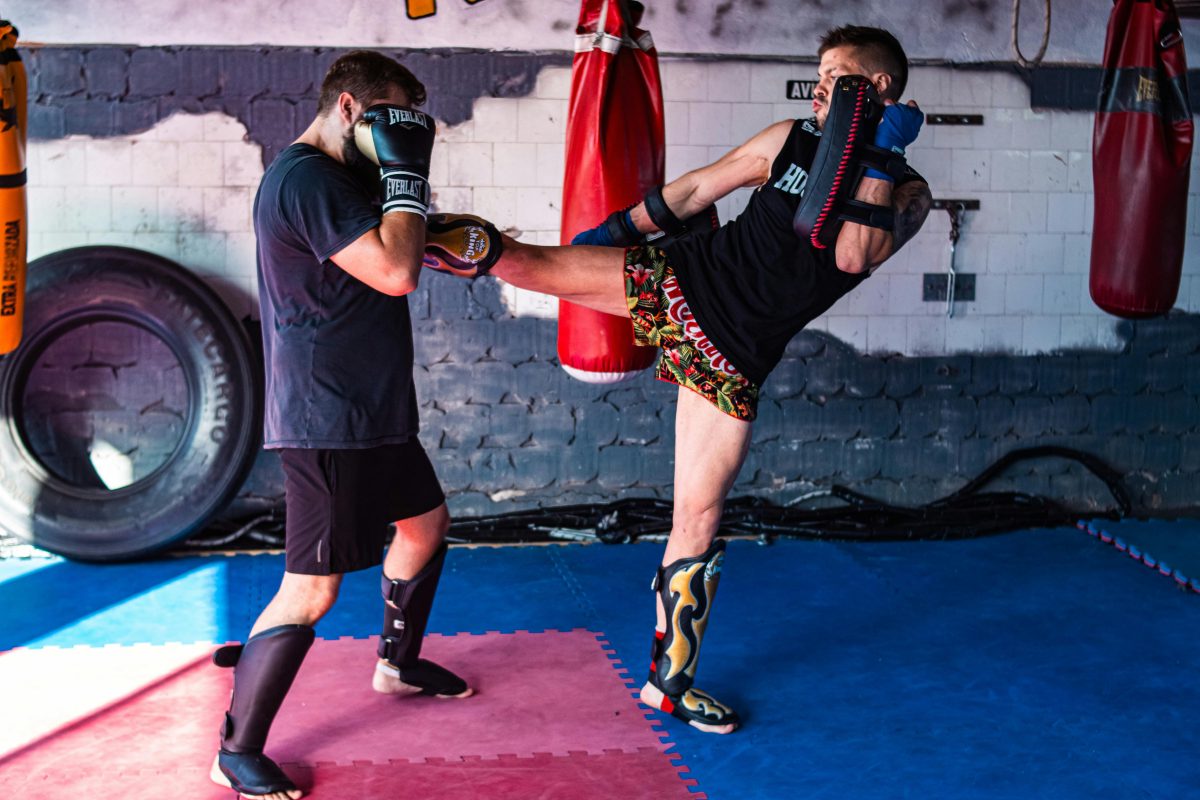Last Updated on: 14th July 2024, 09:07 am
Introduction to Core Strength

A strong core is the bedrock of overall health and fitness, serving as the epicenter of your body’s power. Its importance cannot be overstated. With a robust core, you unlock a world of benefits.
- Imagine standing taller, with a posture that speaks confidence.
- Envision moving with grace, each step balanced and sure.
- And the relief of saying goodbye to nagging back pain.
These are not just dreams; they are achievable realities with a strong core. Improved posture, better balance, and reduced back pain are just the tip of the iceberg. Each benefit interlocks, creating a foundation for a healthier, more vibrant life. As we delve deeper into the best exercises for core strength, remember, the journey to a stronger core is not just about physical transformation. It’s about enhancing your quality of life, one breath, one movement at a time.
Anatomy of the Core

The core is more than just the surface muscles we often strive to define; it’s a complex system that supports every movement our body makes. At the heart of this system are four key muscle groups:
- Rectus Abdominis: Often celebrated for its aesthetic ‘six-pack’ appearance, crucial for flexing the lumbar spine.
- Obliques: Essential for rotating the torso and lateral flexion.
- Transverse Abdominis: Acts like a corset, stabilizing the core and compressing the abdominal contents.
- Lower Back Muscles: Including the erector spinae, work tirelessly to support the spine.
Together, these muscles form a powerhouse of support for the spine and facilitate smooth, coordinated body movements. Their synergy is vital not just for performing daily activities but also for excelling in physical endeavors. A strong core equals a strong body.
Understanding the anatomy of the core is the first step towards unlocking its potential. With this knowledge, we can target these muscles more effectively, crafting exercises that enhance strength, improve posture, and reduce the risk of injury. Let’s embrace the journey to a stronger, more resilient core.
Principles of Effective Core Training

Embarking on a journey to bolster core strength demands a multifaceted approach. It’s not just about crunches; it’s about embracing a variety of exercises that challenge every muscle within the core’s complex system. Variety is the spice of life, and in core training, it’s the key to engaging the rectus abdominis, obliques, transverse abdominis, and the often-overlooked lower back muscles.
- Variety: Diversify your workout routine to ensure each muscle group gets the attention it deserves.
- Strength with Flexibility: Balance strength training with flexibility exercises for optimal core functionality.
- Static and Dynamic Exercises: Incorporate both to prepare your core for any challenge.
By adhering to these principles—embracing variety, balancing strength with flexibility, and incorporating both static and dynamic exercises—you set the stage for a core that is not just visually appealing but functionally formidable. Let’s commit to a training regimen that respects the complexity of our core muscles, fostering a foundation of strength that supports every aspect of our physical health.
Plank Variations for a Solid Foundation

The journey to a stronger core is paved with a variety of exercises, each targeting different facets of our core’s complex system. Among these, planks stand out for their simplicity and effectiveness. Let’s explore three plank variations that are essential for building a solid foundation.
Standard Plank: Technique and Benefits
Begin in a push-up position, with your forearms on the ground and elbows aligned below your shoulders. Engage your core, ensuring your body forms a straight line from head to heels. This powerhouse move strengthens the entire core, including the rectus abdominis, obliques, and lower back muscles. It’s a staple for good reason: it enhances posture, reduces back pain, and builds endurance.
Side Plank: Targeting the Obliques
Transition to your side, placing one forearm on the ground and stacking your feet. Lift your hips, forming a straight line with your body, and hold. This variation zeroes in on the obliques, crucial for rotational strength and lateral stability. It’s not just about sculpting a defined waist; it’s about building a core that can twist, bend, and support with ease.
Plank with Leg Lift: Increasing the Challenge for the Posterior Chain
From the standard plank position, raise one leg at a time, keeping your core tight and your body level. This advanced variation introduces an extra challenge, engaging the glutes and hamstrings of the lifted leg. It’s a testament to the versatility of planks: by tweaking the basic form, we can engage the posterior chain, enhancing our core’s overall strength and functionality.
Each plank variation brings its own set of benefits, targeting different muscle groups within the core. By incorporating these into your routine, you’re not just working towards a stronger core; you’re building a foundation that supports every physical activity. Remember, a strong core is more than just aesthetic; it’s the key to a healthier, more active life.
Dynamic Exercises for Core Activation

For those seeking to elevate their core strength, incorporating dynamic exercises into your routine is a game-changer. These movements not only activate the core but also blend strength with cardiovascular fitness, offering a holistic approach to core conditioning.
Russian Twists: Engaging the Obliques and Rectus Abdominis
Sit on the floor with knees bent, feet lifted slightly, and lean back to engage the core. Holding a weight or simply clasping your hands together, rotate your torso from side to side. This movement intensely targets the obliques and rectus abdominis, carving out a stronger, more defined core.
Bicycle Crunches: A Comprehensive Exercise for All Abdominal Muscles
Lie on your back with hands behind your head and legs raised to form a 90-degree angle. Bring your right elbow to your left knee, then alternate sides, mimicking a cycling motion. This exercise engages all abdominal muscles, making it a comprehensive core workout.
Mountain Climbers: Combining Cardio with Core Strengthening
Start in a high plank position, with your body straight and hands under shoulders. Drive one knee towards the chest, then quickly switch legs, maintaining a brisk pace. Mountain climbers are exceptional for combining cardio with core strengthening, enhancing endurance while sculpting the midsection.
These dynamic exercises are pivotal for anyone looking to activate and strengthen their core. By challenging the core muscles through a variety of movements, you not only build strength but also improve functional fitness, ensuring your core is equipped to support every aspect of your daily life. Embrace these exercises for a stronger, more vibrant core.
Incorporating Equipment for Advanced Core Training

Advanced core training transcends traditional exercises, introducing equipment that elevates the intensity and effectiveness of your workout. By integrating these tools, you challenge your core in new and dynamic ways, fostering strength that permeates every physical endeavor.
Stability Ball Exercises: Elevate Your Planks and Rollouts
- Introduce a stability ball to your planks and witness a significant increase in difficulty. Resting your forearms on the ball, the instability forces your core to engage deeply to maintain balance.
- Rollouts, another potent exercise, involve kneeling and rolling the ball forward while keeping your back straight, igniting the core muscles to resist the movement.
Medicine Ball: Add Weight to Your Twists and Sit-ups
- Grasping a medicine ball during twists and sit-ups adds a layer of resistance that your core must overcome. This additional weight not only strengthens the muscles but also enhances the power and explosiveness of your movements.
TRX or Suspension Training: Harness Your Body Weight
- TRX or suspension training systems leverage your body weight to activate the core. Suspended planks, pikes, and knee tucks challenge your stability and strength, as your core works overtime to keep your body aligned and controlled throughout each exercise.
By incorporating these tools into your core training regimen, you not only diversify your workouts but also amplify the results. Embrace the challenge and watch as your core transforms into a pillar of strength, capable of supporting and enhancing all aspects of your physical performance.
Creating a Balanced Core Workout Routine

Embarking on a core strengthening journey requires a structured approach, tailored to your fitness level. Whether you’re a beginner, at an intermediate level, or advanced, the right plan can propel you towards your goals. Let’s dive into sample workout plans and essential tips for progression.
Sample Workout Plans
- Beginners: Start with basics. A 15-minute routine, thrice a week, focusing on planks, bird dogs, and lying leg raises. Gradually increase duration as your endurance improves.
- Intermediate: Introduce complexity. A 20-minute session, four times a week, incorporating Russian twists, bicycle crunches, and side planks. Aim to increase the intensity by adding more reps or holding positions longer.
- Advanced: Challenge your limits. A 30-minute, high-intensity routine, five days a week, with dynamic exercises like mountain climbers, stability ball pikes, and TRX knee tucks. Focus on maintaining form while increasing speed or resistance.
Tips for Sustained Improvement
- Frequency, duration, and progression are key. Start slow, gradually increasing the intensity and complexity of exercises.
- Listen to your body, allowing adequate rest for recovery, crucial for muscle growth and strength.
- Embrace variety, alternating between static and dynamic exercises to challenge your core from every angle.
- Rest and recovery are not mere afterthoughts; they are integral to building core strength. Incorporating rest days into your routine allows muscles to repair and grow stronger.
- Equally, focusing on hydration and nutrition fuels your body for recovery and performance.
- Remember, consistency is the cornerstone of improvement. By adhering to a balanced routine, respecting your body’s limits, and progressively challenging yourself, you’ll witness remarkable gains in core strength, paving the way for a healthier, more vibrant life.
In Closing
A strong core is your gateway to vitality. It’s the foundation of physical and mental well-being, bridging strength with the joy of movement. Through a blend of dynamic and static exercises, tailored to every fitness level, we unlock the potential for a life filled with energy and resilience. Embrace this journey towards a stronger core, and let each plank, twist, and crunch lead you to a healthier, more vibrant existence. Your core’s strength is not just a reflection of your physical health but a testament to your enduring commitment to overall well-being.
Best Exercises for Core Strength FAQs
Sit-ups can be effective for building core strength but should not be the sole exercise for core training. They primarily target the abdominal muscles but can put unnecessary strain on the neck and lower back if not done correctly. Incorporating a variety of core exercises is recommended for a well-rounded core strength training program.
Yes, strengthening your core can help reduce back pain by improving posture and stability. Strong core muscles support the spine, reducing the strain on the back muscles and ligaments. Regularly incorporating core strengthening exercises into your routine can lead to significant improvements in back pain and overall posture.
Core exercises can contribute to weight loss as part of a comprehensive fitness program that includes cardio and strength training. While they primarily target muscle strengthening and toning, increasing muscle mass can help boost metabolism. However, for significant weight loss, a focus on diet and overall physical activity is essential.
Increasing the duration or adding weights can make core exercises more challenging. For example, holding a plank for longer periods or incorporating a weighted vest can significantly increase the intensity of the workout. Additionally, trying more advanced variations of standard exercises can further engage the core and promote strength gains.
Results from core exercises can typically be seen within 4 to 8 weeks of consistent, dedicated practice. The timeframe can vary based on factors like the starting point, intensity of the workouts, and individual body types. Consistency and progressively challenging the muscles are key to seeing improvements.
Core exercises should be performed 3-4 times a week to allow muscles to recover and grow stronger. Incorporating rest days is crucial for preventing overuse injuries and ensuring muscles have time to rebuild. Varying your routine can also help maintain progress and prevent plateauing.
No, it is not necessary to use equipment for core exercises as many effective movements rely on body weight. Exercises like planks, sit-ups, and leg raises can be performed without any equipment and still provide significant benefits. However, incorporating equipment like stability balls or resistance bands can add variety and increase difficulty.
A strong core enhances balance and stability, making everyday activities and physical tasks easier and reducing the risk of falls. It also improves athletic performance, as the core is pivotal in transferring strength and power between the upper and lower body. Furthermore, a strong core can help prevent injuries by supporting proper posture and alignment.
Planks are among the top exercises for core strength as they engage multiple muscle groups simultaneously. By maintaining a push-up position for extended periods, you effectively work your abs, back, and shoulders. This exercise is adaptable and can be modified to increase difficulty as your strength improves.
Diet plays a significant role in building core strength by providing the necessary nutrients for muscle repair and growth. Consuming a balanced diet rich in proteins, healthy fats, and carbohydrates can fuel your workouts and aid in recovery. Hydration is also crucial for optimal muscle function and recovery.
Orlando is a all round athlete from Australia, now resident in Germany. His sports of passion of American Football(Offensive line), weight training and indoor rock climbing where he uses his 195cm wing span to his advantage.



